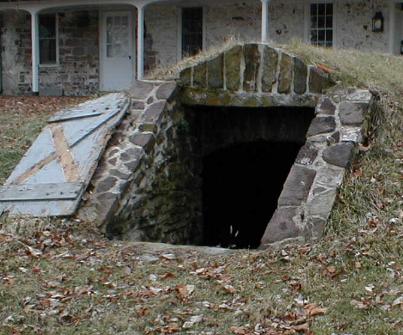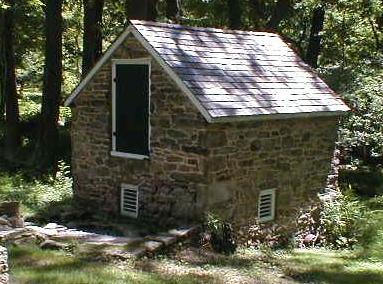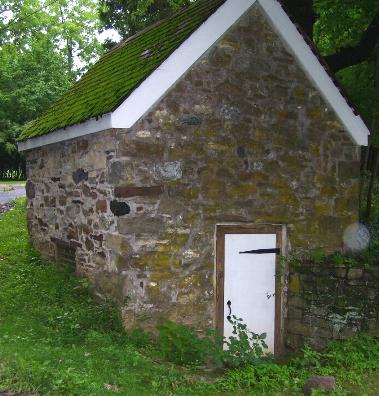



The basic model is the simple subterranean cellar that is mostly, if not entirely, underground with a mound of soil over the vault ceiling. Stone or brick stairs descend to the floor framed by the water filled trench.
Spring water would flow through this trench created around three sides of the stone or brick floor. This water, at about 55 degrees, would keep anything in the trough cold. The most common food product would be raw milk, stored in pottery crocks, set in the cold water. Underground water would flow into one end of the trench and then exit through an opening at the other end. The outlet opening needs to be just the right size to maintain the water level needed in the trench.
There are often stones protruding from the walls to support shelves. The flowing cold water would also chill the air that would extend the useful life of perishable food items kept cool on these shelves.

At the end opposite the stairs, there's sometimes an opening into the shaft of a hand-dug well. The shaft of these wells can be very deep and/or filled with water. I prefer to see these openings blocked off as this is a child safety concern.
The walls and ceiling were coated with mortar and then whitewash was usually applied - many, many layers as the whitewash was renewed regularly. It reflects light, but mainly its purpose is to reduce algae and mold growth.

Most have a small square "flue" in the middle of the vault ceiling. This is intended for ventilation of the limitless moisture in the air.
The upgraded model adds a small room above, providing additional room for storage or processing. In the hot summers, this little room is also usually cooler and probably a nice place to take a break from all of the farm work.
Like other outbuildings on old farms, the spring house is often abandoned and neglected. There is little use in the 21st for a cold, damp little building half in the ground. I'm hopeful the remaining examples are preserved.


Bill Kibbel is a consultant and an inspector of historic homes
& commercial buildings at Heritage Building Inspections
How to create a site - Try now